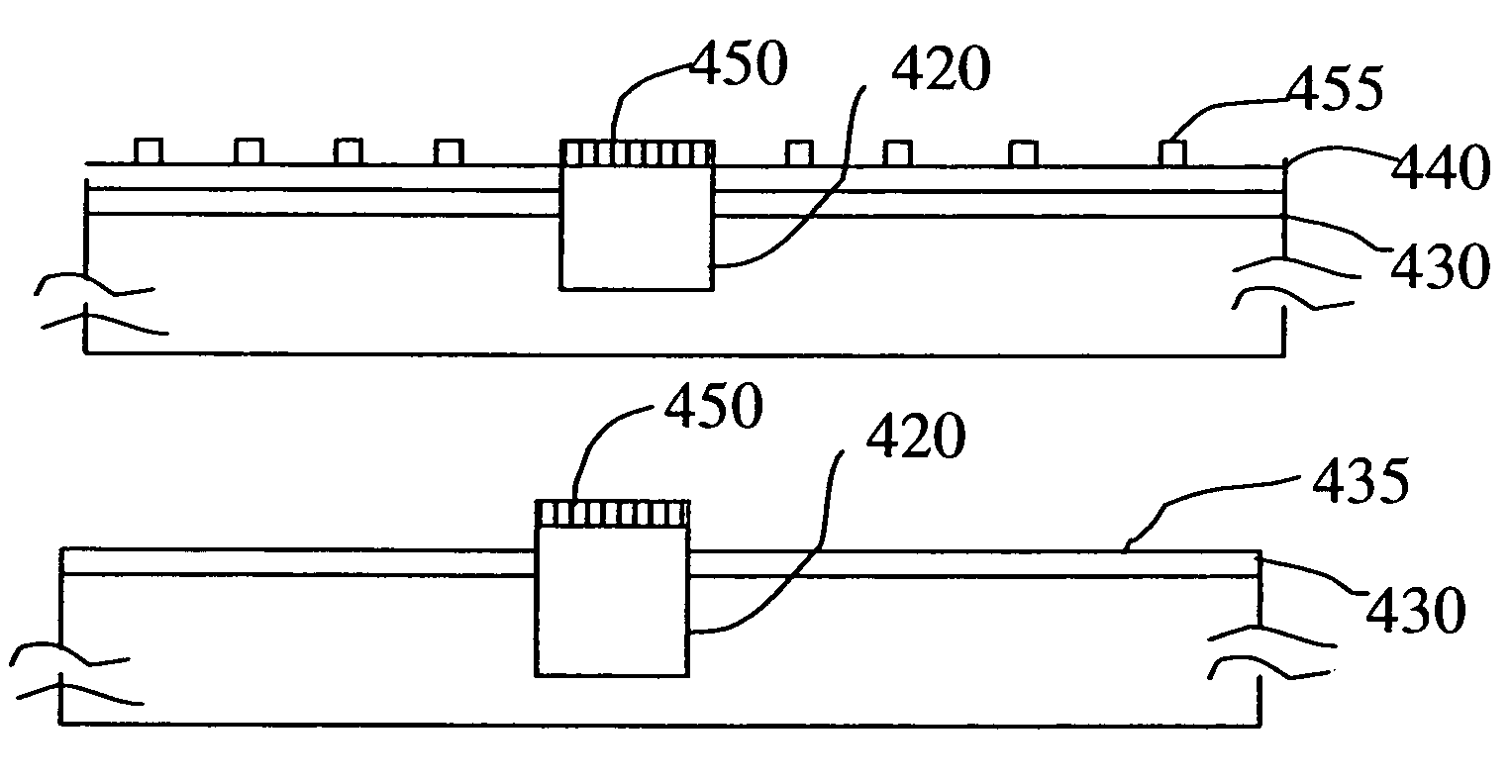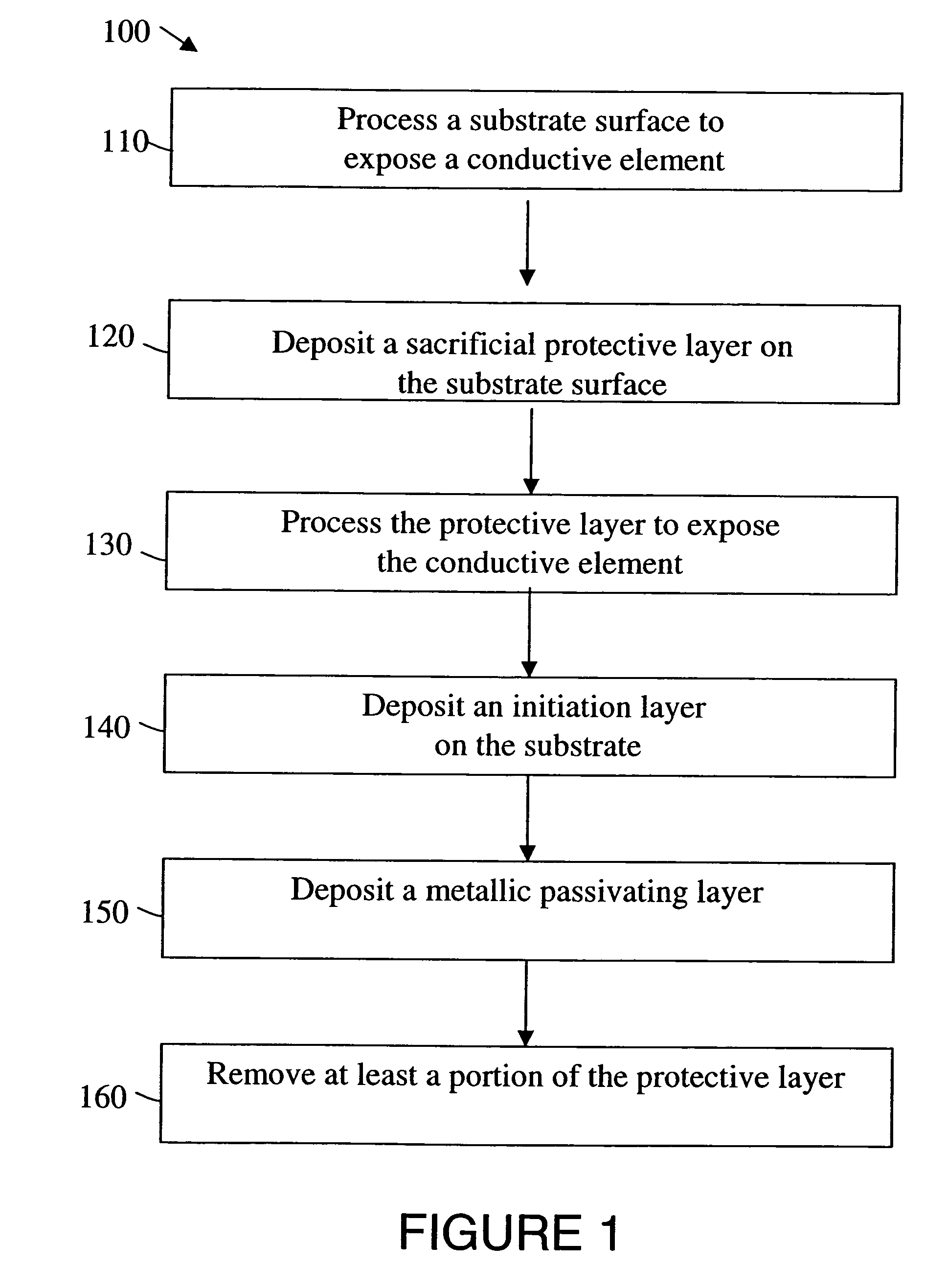Selective metal encapsulation schemes
- Summary
- Abstract
- Description
- Claims
- Application Information
AI Technical Summary
Benefits of technology
Problems solved by technology
Method used
Image
Examples
Embodiment Construction
[0020]The words and phrases used herein should be given their ordinary and customary meaning in the art by one skilled in the art unless otherwise further defined.
[0021]“Substrate surface” as used herein refers to a layer of material that serves as a basis for subsequent processing operations. For example, a substrate surface may contain one or more “conductive elements,” such as aluminum, copper, tungsten, or combinations thereof, and may form part of an interconnect feature such as a plug, via, contact, line, wire, and may also form part of a metal gate electrode. A substrate surface may also contain one or more nonconductive materials, such as silicon, doped silicon, germanium, gallium arsenide, glass, and sapphire. The substrate surface may also contain one or more low k materials such as carbon-doped oxides, porous low k materials such as organic low k and inorganic low k materials and hybrids thereof, or air-gap structures.
[0022]The term “about” is used herein to mean approxim...
PUM
 Login to View More
Login to View More Abstract
Description
Claims
Application Information
 Login to View More
Login to View More - R&D
- Intellectual Property
- Life Sciences
- Materials
- Tech Scout
- Unparalleled Data Quality
- Higher Quality Content
- 60% Fewer Hallucinations
Browse by: Latest US Patents, China's latest patents, Technical Efficacy Thesaurus, Application Domain, Technology Topic, Popular Technical Reports.
© 2025 PatSnap. All rights reserved.Legal|Privacy policy|Modern Slavery Act Transparency Statement|Sitemap|About US| Contact US: help@patsnap.com



